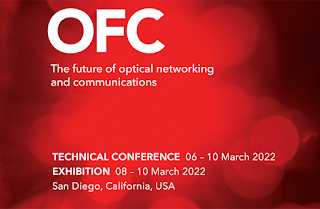OFC, in collaboration with the operator of California's research and education network CENIC, is launching OFCnet, a live high-speed fiber path connecting CENIC's facility in San Diego to the San Diego Convention Center, where OFC is being held 06-10 March 2022.
The OFCnet gateway, with up to 34Tbps of bandwidth, will enable academia and industry to join forces to push the boundaries as they design, build and utilize this platform for cutting-edge networking technologies. The vision of OFCnet is being facilitated through the collaboration of CENIC, Ciena, EXFO, Lumen, Smart City Networks, the University of California San Diego's Qualcomm Institute and Supercomputer Center and Viavi. This team of visionaries aims to bring together bright minds from academia, industry and government to make this innovative networking infrastructure flourish in the future. The network will be available for the next five years."CENIC is thrilled to be able to help facilitate this dedicated high-capacity infrastructure to drive adoption and innovation in optical networking technology," said CENIC's Vice President of Engineering and Security Tony Nguyen. "It is through private and public collaborative projects like this that our research and education communities are empowered to accelerate discovery in solving our toughest challenges."
"OFCnet presents a game-changing opportunity for the research and education (R&E) community to participate in OFC," said OFC General Chairs Shinji Matsuo, David Plant and Jun Shan Wey. "This is just the beginning of an incredible collaboration with industry, government and academia to provide a platform for data sharing and discoveries that are driving innovation around the world."
"Pushing boundaries is what the OFC community does so well, and we're proud to provide the fiber backbone that will connect CENIC's facility and the San Diego Convention Center, making OFCnet at OFC a reality," said Ed Morche, president of Lumen's North American Enterprise and Public Sector. "CENIC's high speed network is built on the Lumen optical fiber and colocation infrastructure to quickly and securely connect academia, government and industry to drive innovation. These ultra-fast connections are designed to increase scientific collaboration among diverse organizations across the U.S."















